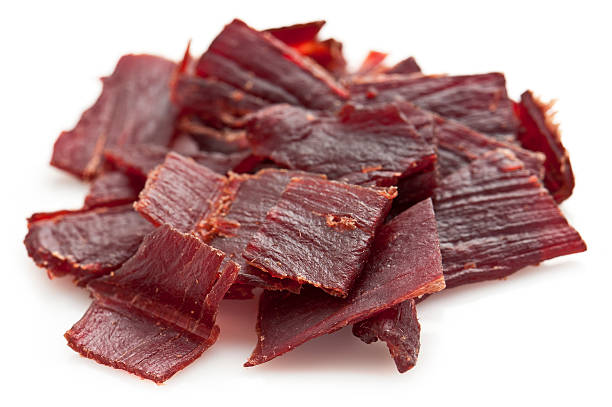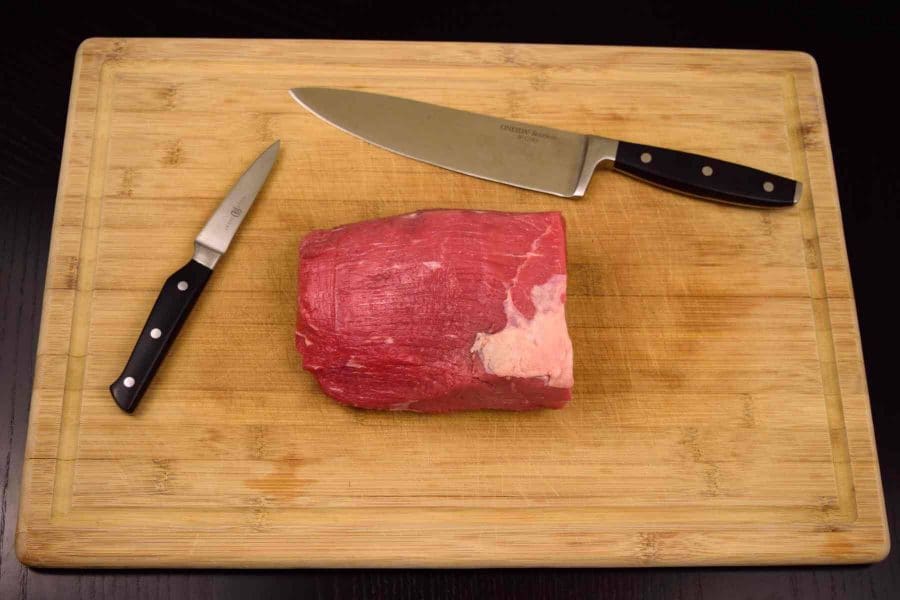Do you want to know how to make your own beef jerky? Look no further! This article will show you how to do it in a dehydrator, step by step. From picking out the meat to slice, marinating it with a great recipe, drying it out, and checking to see when it’s done, this includes everything. [feast_advanced_jump_to].
Making delicious beef jerky requires carefully controlling the dehydration process. Most recipes call for drying the meat at 145°F, but how long should you actually dehydrate for ideal texture and safety? In this comprehensive guide, we’ll cover everything you need to know about dehydrating beef jerky at 145°F.
We’ll discuss optimal timing, step-by-step instructions safety tips troubleshooting, and flavoring ideas. Follow these best practices for dehydrating and you’ll have flavorful, chewy jerky every time.
Why Choose 145°F for Beef Jerky?
First, let’s look at why 145°F is the ideal temperature for making beef jerky. Here are the key benefits of dehydrating at 145°F:
-
Prevents bacterial growth – The low heat keeps bacteria from multiplying
-
Retains moisture – Drying at a lower temp preserves moisture content,
-
Allows enzymes to tenderize – Enzymes help tenderize the meat over time.
-
Intensifies flavor – Low, slow drying concentrates the flavors.
-
Avoids cook loss – Minimizes moisture and fat rendering out.
Higher temperatures would cause the jerky to dry out too quickly. The 145°F setting optimally dehydrates the beef while maintaining texture.
Determining Ideal Dehydration Time
So how long should beef jerky dehydrate at 145°F? The timing can vary quite a bit depending on these factors:
-
Meat thickness – Thinner cuts dry faster.
-
Moisture content – Higher moisture means longer time.
-
Doneness – Personal texture preference impacts time.
-
Relative humidity – More humid environments increase time.
For 1⁄4 inch thick strips, the typical range is 4 to 8 hours until completely dried. Monitor for visual cues like stiff texture and matte surface.
Step-by-Step Instructions
Follow this process for perfectly dehydrated jerky:
-
Prepare the meat. Slice against the grain into 1⁄4 inch thick strips.
-
Marinate for optimal flavor. Chill for 8 hours or up to 24 hours.
-
Remove from marinade and pat dry. Discard used marinade.
-
Arrange strips in a single layer on dehydrator trays.
-
Dehydrate at 145°F, checking periodically. Rearrange as needed.
-
Finish dehydrating when cracks form and jerky is dry but pliable.
-
Allow jerky to cool fully before storing in an airtight container.
Handy Time-Saving Tips
Keep these tips in mind to streamline the process:
-
Trim fat before slicing to avoid greasy spots.
-
Cut partially frozen meat for thinner, more even slices.
-
Marinate in batches for consistent flavors.
-
Rotate trays and shuffle jerky pieces periodically for even drying.
-
Use additional trays to avoid overcrowding and poor air circulation.
-
Start checking early and frequently to catch doneness.
Troubleshooting Common Issues
Dehydrating jerky can occasionally result in:
-
Dry, brittle texture – Dehydrated too long.
-
Chewy, bendable jerky – Needed more time dehydrating.
-
White spots – Fat separation. Trim better next time.
-
Curled strips – Either low humidity or uneven drying.
-
Off flavors – Contaminated marinade or old meat.
Carefully controlling time, temperature, and conditions prevents these potential issues.
Safety Tips for Jerky Success
To safely enjoy your homemade jerky:
-
Always thaw meat before slicing to avoid bacterial growth.
-
Use freshly made marinades, never reusing old marinade.
-
Wash hands, surfaces, tools before and after handling raw meat.
-
Check internal temperature with a probe thermometer, verifying it reaches 160°F.
-
Promptly refrigerate any leftover dried jerky within 2 hours.
Following food safety guidelines is crucial when working with raw meat.
Ideal Flavors for Jerky
Jerky can be flavored with endless combinations of seasonings. Try these tasty marinades:
-
Teriyaki – garlic, soy sauce, honey, ginger
-
BBQ – chili powder, brown sugar, Worcestershire
-
Southwest – cumin, oregano, cayenne, lime
-
Thai – lemongrass, fish sauce, chili paste
-
Lemon Herb – rosemary, thyme, lemon pepper
Get creative mixing flavors to invent your own signature jerky!
Final Jerky Tips
Keep these final tips in mind for jerky success:
-
Record cook times to optimize next batch.
-
Use a sharp knife for clean cuts.
-
Chill meat before slicing for thinner cuts.
-
Rotate pieces for consistent drying.
-
Store in sealed bags or containers.
Mastering the art of dehydrating jerky takes experimentation. Follow this 145°F dehydration guide and you’ll be on your way to making perfect jerky.

How to get the free membership?
Click here for the $45 gift card with sign up. (Jerkyholic is in no way associated with this deal. We do not get anything from Sams or you for you signing up; just passing along a great deal!)
It will give you a coupon code when filling out information. Write down that code and give it to the person at Sams’s membership desk. The woman we dealt with already had it, but just in case, write it down.
Watch how to make beef jerky
Step 1 – Start with a lean piece of meat. The goal is to find a piece of meat that has as little fat as possible.
- Eye of Round Roast
- Top & Bottom Round Roasts
- Flank Steak
- Sirloin Tip
- Ground Beef (10% fat or less)
I used a 2lb Beef Eye of Round for this beef jerky recipe.

When ls Jerky Done-Ronco Dehydrator
FAQ
Can you dehydrate beef jerky at 145 degrees?
How long do I leave jerky in the dehydrator?
How long to dry jerky at 155?
How to tell if jerky is dehydrated enough?
How long does beef jerky take to dehydrate?
However, the duration of the dehydration process is crucial to ensure safety and optimal texture. The dehydration time for beef jerky at 145 degrees Fahrenheit typically ranges from 4 to 8 hours, depending on several factors: Thickness of the meat: Thinner slices will dehydrate faster than thicker ones.
Can you consider beef jerky a healthy snack?
No, as this is high in salt and other preservatives to main both its structure, taste and longevity. As a processed meat, beef jerky is also higher in saturated fat. All the salt, preservatives and saturated fat can be harmful to primarily your heart health. It is best to swap this out for some chicken breasts that have been cubed or homemade turkey balls.
What temperature should a beef jerky dehydrator be?
Then, we’ll touch on adjusting your beef jerky dehydrator temperature for specific outcomes. The majority of dehydrators will recommend a temperature range of 160°F to 165°F (70°C to 74°C) for beef jerky. This range ensures not only the thorough drying of the meat but also addresses the primary safety concern: eliminating harmful bacteria.
Should you dehydrate jerky?
For the best results, dehydrating jerky slowly is essential because it is essentially curing meat. To ensure that pathogens are eliminated, the meat should be heated to 160 degrees Fahrenheit. Having said that, dehydrating jerky too quickly dilutes the flavor and results in less appetizing dry jerky.
